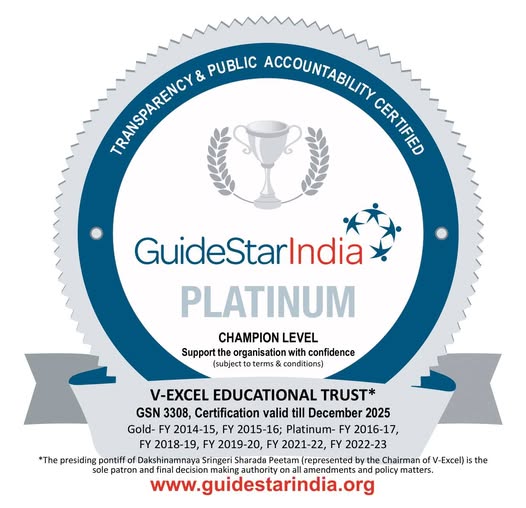Therapy Services
V-Excel provides the rehabilitation services to people belonging to all age groups. However, the nature, intensity and goals of rehabilitation often differ by age. Occupational therapy (OT) and physical therapy (PT) are two crucial aspects of rehabilitation services. These specialist fields work to treat and overcome any disability caused by injury or disease.
Occupational therapy (OT) addresses patients' impairments and functional limitations with the purpose of increasing their capability to complete activities of daily living (ADLs). ADLs include bathing, toileting, dressing, cooking, writing and other daily routines of self-care and job-related issues. The goal of occupational therapy is to set in motion a patient's ability to achieve the maximum potential level of independence.
Physical therapy (PT) focuses on the movement of the human body. Physical therapists treat patients of all ages with physical impairments and functional limitations as a result of a medical condition or injury. Our PTs evaluate and develop a treatment plan to promote movement, reduce pain, increase functional ability and prevent disability. PT treatment concentrates on restoring and strengthening the large muscle groups that contribute to mobility, functional tasks such as standing and reaching, standing, balancing and other physical activities.
While there is a large difference between occupational and physical therapy, both fields complement each other within the rehabilitation setting. OTs and PTs often collaborate to maximize the patient's function and maintain independence. For example, a PT may work with the patient to regain lower-extremity strength, flexibility and balance in order to promote the ability to perform standing ADLs.
OT for children:
OT promotes normal development and stimulates learning in children with specific learning difficulties, physical disabilities, delayed development and also for those recovering from illness or injury. Working with children, their families and teachers, our OTs aim to improve the child’s quality of life by helping them to participate in play, preschool, school and home activities.
An occupational therapist may work with children in any of the following areas:
• Prerequisite activities – child's physical abilities, such as motor control, eye-hand coordination, body awareness and sensation
• Functional skills – the child’s day-to-day living skills, such as eating, writing, going to the toilet, interacting with other children and playground skills
• The environment – classroom furniture, classroom and schoolyard access, and equipment for woodwork, art and physical education.
-
OT for adolescents:
Adolescence is often a challenging and difficult time for young people and their families. OT can help adolescents by promoting personal growth, which can help to improve self-esteem and develop independent social and communication skills. Teenagers with social and lifestyle problems, or disabilities resulting from an accident or disease, can maximise their independence and quality of life into adulthood with the help of an occupational therapist.
-
OT in mental health:
Occupational therapists also assist adults who are experiencing psychological or emotional difficulties. They can help a person to develop better ways to deal with mental illness in the context of day-to-day activities, managing work and emotional problems. They work with other health professionals such as psychiatrists, psychologists, social workers and doctors.
-
Physiotherapy - A holistic approach:
Our physiotherapists work to improve a child's mobility and health and to reduce the risk of injuries. In many cases, an injury is caused by a range of factors working together. For example, persistent back pain may be triggered by a combination of poor posture, being overweight, repetitive work-related activities and incorrect technique when playing sport. The physiotherapist aims to treat the back pain, but also to address the factors that contribute to the cause. This approach aims to lessen the risk of the injury happening again.
Our PTs draw upon a wide range of therapies, tailored to suit individual needs. Some of these therapies include:
• Manual therapies – such as massage, stretching, manual resistance training, and joint mobilisation and manipulation, including spinal mobilisation.
• Exercise programs – such as posture retraining, muscle strengthening, cardiovascular training and stretching.
• Other services – taping and splinting, correcting flawed sporting techniques, and providing information on equipment aids such as wheelchairs and walking frames.


